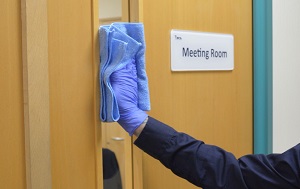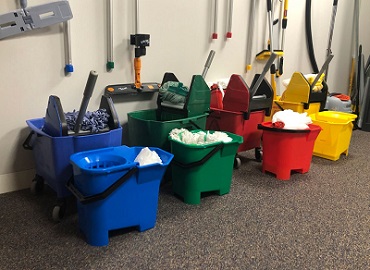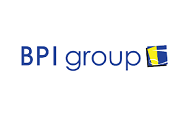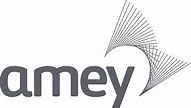
Cleaning Chemicals in the Coronavirus Pandemic: your questions answered
As the UK goes back to work, school and university, organisations need to clean and keep clean offices, shops and all other public spaces.
The risk of a source of infection has to be mitigated but, faced with plenty of extraordinary product claims, how to select the right cleaning and hygiene products?
Nicky Biggart, UK Janitorial Sales Manager of CHSA member Evans Vanodine, and Chris Ryan, Head of International Business at BICSc answered questions during the CHSA’s webinar.


Virucide: A chemical agent which, under defined conditions, is capable of irreversibly inactivating viruses.
Biocide: A term for a chemical agent capable of killing / inactivating / deterring micro-organisms. It includes the more specific terms of algicide, bactericide, fungicide, sporicide and virucide. Common examples are chlorine, isopropyl alcohol (IPA), quaternary ammonium compound QAC and peracetic acid.
Cleaning, sanitising and disinfection
-
Areas with a low risk of transferring germs will be suited to cleaning alone e.g. floors, carpets, windows, mirrors and lighting fixtures.
-
Sanitising lowers the number of germs on surfaces or objects to a safe level, measured by public health standards. Sanitising is suited to food preparation areas, objects related to making or eating food and communal areas, for example kitchens, restaurant eating areas, countertops, doorknobs, and light switches. The term sanitiser usually means the product is capable of cleaning and disinfecting in one operation.
-
Disinfection uses chemicals to kill germs on surfaces or objects. This process does not necessarily clean dirty surfaces or remove germs, but by killing germs on a surface after cleaning, it can further lower the risk of spreading infection. This process is used in hospitals, care homes and schools. Disinfectants tend to work better after a surface has been cleaned.
EN Standards and what they mean
The European Chemicals Agency (ECHA) is the European Union agency that manages the technical and administrative aspects of the implementation of EU regulations including REACH, (Registration,
Hand sanitiser
Hand hygiene is essential to tackling COVID-19. Wherever it is available, soap and water should be used. Where it is not available, the World Health Organisation (WHO) recommends the use of hand sanitiser, being careful to use the correct dose and adhering to the correct contact time (20 seconds).
The European Chemical Agency (ECHA) EN 1500 test method assesses hand gels and rinses with a 30 second contact time. It has found formulations should contain greater than 80% ethanol or greater than 60% isopropyl alcohol (IPA).
However, to increase supply in the face of exceptional demand across the globe, the World Health Organisation (WHO) defined a number of hand sanitiser recipes producers can use to meet standards. These defined an effective alcohol-based hand sanitiser as containing more than 60% alcohol (ethanol, IPA or a mixture).
Hand sanitisers developed and manufactured pre-COVID under the BPR (Biocidal Product Regulation) adhere to EN 1500. According to the European Chemical Agency’s (ECHA) Article 55 derogation, if the company is using the WHO recommended formula, no testing is required, at present. The UK Government and WHO will review the decision to allow any manufacturer to produce hand sanitiser on 29 September.

Process and procedure
The essential relationship
A good relationship with the manufacturer and distributor of cleaning and hygiene products is essential – they have the knowledge and experience as well as the scientific expertise.
Cleaning products are specific to the particular operational environment in which they are used – one size does not fit all. It is imperative therefore, the user works closely with the manufacturer and distributor of the products to get the advice
Is there a product proven to kill coronavirus?
Coronavirus is a large family of enveloped viruses. There are animal and human coronaviruses and the family includes SARs and MERS. SARs-Cov-2 is the virus name of this current outbreak and COVID-19 is the name of the disease it causes. The SARS-Cov-2 virus has not been released for testing, so any claim on a product stating it is proven to kill the virus is untrue.
The Vaccinia virus is from the same family of enveloped viruses. The closest surrogate, it is expected to behave in the same way as SARs-COV-2 and so has been used to test the virucidal efficacy of products. This approach has been agreed by the World Health Organisation (WHO) and is underwritten by EN 14476.
Which products are effective?
The European Chemicals Agency (ECHA) requires all claims on product labels to be supported by test results and that those test results are appropriate to the area of application. Products stamped with EN 14476 have been tested against the Vaccinia virus and so can claim effectiveness against coronavirus.
Bleach products are also included based on the GOV.UK guidelines which state 1000ppm chlorine will be effective.
Some products claim residual effects? Is this legitimate?
Once an area has been cleaned and disinfected with a quaternary ammonium compound (QAC) product there will be some residual effect. However, as soon as a contaminate enters the space, cleaning is needed. Contaminates include simply an open window or a person entering the area. We are not aware of any test data supporting a residual effect in the presence of such a contaminate.
How do I verify product claims?
Product approval by the ECHA is specific to the product and the task, i.e. the specific product, including whether it is a concentrate or ready to use formulation, is approved only for the specific task. It is imperative, therefore, to use the correct product for the task. It is only for that task, in that environment, that the product is approved.
Reputable manufacturers are keen to display the relevant EN number on the product. The labelling will also clearly indicate key information including the contact time and dilution rate. If in doubt contact the manufacturer or distributor.
Phrases
Do fogging and misting work?
The World Health Organisation, (WHO) does not recommend fogging and misting because there is no known relevant test data. Test data exists for the efficacy of quaternary ammonium compound (QAC) applied via mopping, trigger sprays, etc but not when applied via a fogging or misting device. We do not know the impact of the product being dispersed on a larger scale in a closed environment on people’s respiratory systems or the consequences of potential ingestion.
There is no substitute for the two-stage approach of first cleaning and then disinfecting. Fogging and misting should only be used as an additional safeguard and then only following completion of a thorough risk assessment.
Testing of fogging and misting is taking place at the moment. Only when the data is available, and we understand more about the efficacy of the product applied in this way should fogging and misting be considered.
What’s the panel’s perspective on quick fix disinfection concepts, for example disinfection spray booths (chlorine dioxide) and the use of Hypochlorous acid electrostatic charged sprays?
We are seeing chlorine dioxide spray booths popping up in night clubs and have seen spray booths introduced at some shopping malls. They may encourage complacency, people believing they have been disinfected and so do not need to adhere to social distancing or wash their hands as much.
While there is insufficient test data to support their use in the UK and Europe, it is possible they may be useful in some areas, on the proviso detailed risk assessments and method statements are in place before their use and staff are fully trained.
Are there potential problems in the supply of these cleaning and hygiene products?
At the moment, supply of the active ingredients needed to combat COVID-19 are relatively stable. Manufacturers have also been innovating and there is a much wider range
Evaluation, Authorisation and Restriction of Chemicals), CLP (Classification, Labelling and Packaging) and BPR (Biocidal Products Regulation).
ECHA has produced guidelines for active substance approval and product authorisation submitted under BPR. The guidance includes product type (PT) information and the recommended EN test methods to be used to support product claims.
There are EN standards for: hand hygiene, medical, food industrial and veterinarian.
EN disinfectant test methods are used to assess the effectiveness of a particular product against microorganisms in a specific environment. Two methods are used – suspension and surface. Usually both types of methods are used to assess the efficacy of a product. The methods mimic practical applications but under laboratory conditions.
Examples of suspension tests: EN 1276; EN 1650; EN 1656; EN 13727 Examples of surface tests: EN 13697; EN 14349; EN 16615
To claim effectiveness the product must be seen to reduce microbial numbers when compared to the number of organisms at the start of the test or, for surface tests, to a water control performed at the same time.
Why has EN 14476 been used to prove effectiveness? EN 14476 is a virucidal disinfectant test method for the medical area. It includes test conditions for surface disinfection. It has been used in the coronavirus pandemic as there is not an equivalent food, industrial or institutional version available.
All EN standards are governed by the definitive EN 14885. It decrees the type of test that must be undergone. All chemical manufactures in the UK and Europe must adhere to these standards. and guidance required to select the correct product.
Judging creditability
As a user it is important to assess the creditability of the supplier. It is good practice to ask for the empirical data that backs up product claims. Manufacturers and distributors should be able to provide safety data sheets and microbiological profiles for their products quickly and easily. It is a significant concern if they cannot.
PPE – what’s required for preparation and usage
It is essential to follow the manufacturers dilution charts to be certain the product is used at the optimum level. Incorrect dilution results in waste, increased costs and may affect efficacy.
Work with the manufacturer to understand the protective equipment required for each product in each operational environment.
Give the team the right tools for the job
As well as being sure to use the right products and equipment, it is important to adhere to the correct methodology and follow the correct processes. All risk assessments and method statements should reflect the current COVID-19 control measures. For example, they need to include social distancing, hand hygiene, respiratory hygiene and enhanced cleaning arrangements.
Best practice
-
Use creditable products that adhere to current proven testing methods and standards.
-
Adhere to the correct methodology and process for applying the cleaning product, which must include following the manufacturer’s guidelines.
-
Ensure all cleaning operatives are fully trained. They must know how to use the product and equipment within their specific environment and understand colour coding guidance to avoid cross contamination.
-
Ensure cleaning is from clean to dirty surfaces to avoid cross contamination and involves systematic overlapping so surfaces are effectively cleaned.


Phrases like “environmentally friendly”, “natural ingredients” “biocide free”, “QAC free” are being used to promote disinfectant cleaning products. Are these products effective?
Yes. Each product has had to be investigated and approved to secure the relevant EN standard.
If, however, you are uncertain or the product labelling does not clearly state the relevant EN number, request to see the test data and safety data sheet. If this is not possible, request to review the product’s microbiological profile. This should always be readily available. Every approved product has the test data in the form of a microbiological profile. If this is not readily available, it suggests the product claims are not substantiable.
Are there risks associated with the amount of cleaning chemicals being used in workplaces?
The products being used are professional chemicals. It is imperative users are fully trained and strictly adhere to the stated contact times and dilutions, as those are the specific parameters to which the product is tested.
The onus is on the employer to conduct a full risk assessment and ensure all users are fully trained prior to the use of these chemicals. This is particularly important in the current environment as there are many people who might not have used these products before. For example, teachers may be asked to disinfect multiple touch points between classes.
of virucidal products today than in the early days of the pandemic. This position may change if the coming winter in the northern hemisphere causes an upsurge in the virus.
There remains, however, a massive challenge with the packaging, including trigger sprays, hand lotion pumps and their plastic components. Factories have struggled to meet the extraordinary global demand.
As the UK economy continues to open up, more and more organisations need easy-to-use cleaning products for noncleaning operatives to use. Demand for ready-to-use trigger sprays is continuing to escalate. Supply is, therefore, likely to remain challenging well into 2021.
Our advice is for buyers to maintain contact with their distributors and manufacturers to help the supply chain predict demand as accurately as possible and adapt accordingly.
What should I do if a supplier cannot provide the relevant data, but continues to market the product as effective against Corona virus?
Claiming product is effective against Coronavirus without the correct supporting data is fraudulent. The product will not kill SARS-Cov-2 as claimed by the supplier, so puts your employees and customers at risk of contracting COVID-19.
If such a case is discovered, then a complaint can be made to the local trading standards office for them to investigate. You can also report concerns to the European Chemical Agency and the Health & Safety Executive
Are the authorities doing enough?
There are no authorities to police the sector. The onus is on the service provider (in this instance, the cleaning company) to demonstrate responsible service delivery. This includes responsible procurement processes and using creditable products, having trained operatives, conducting robust health & safety compliance and risk assessments, and demonstrating recognised accreditation. It also includes providing testimonials and evidence of effective quality management systems to make the good service providers stand out.
Industry Sector
Archives
Our Clients







































